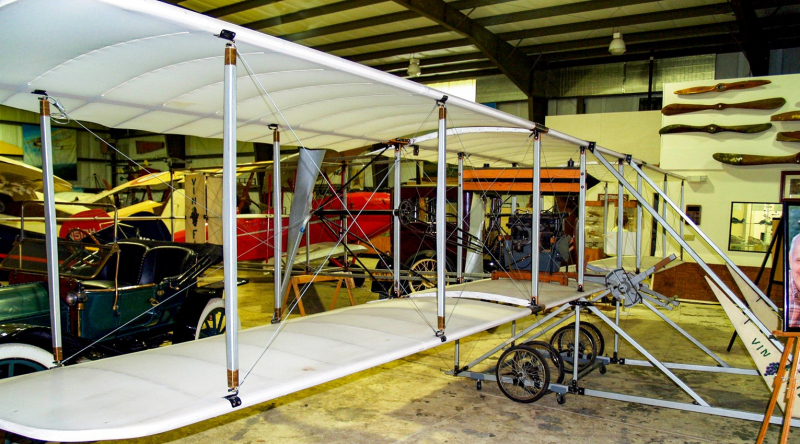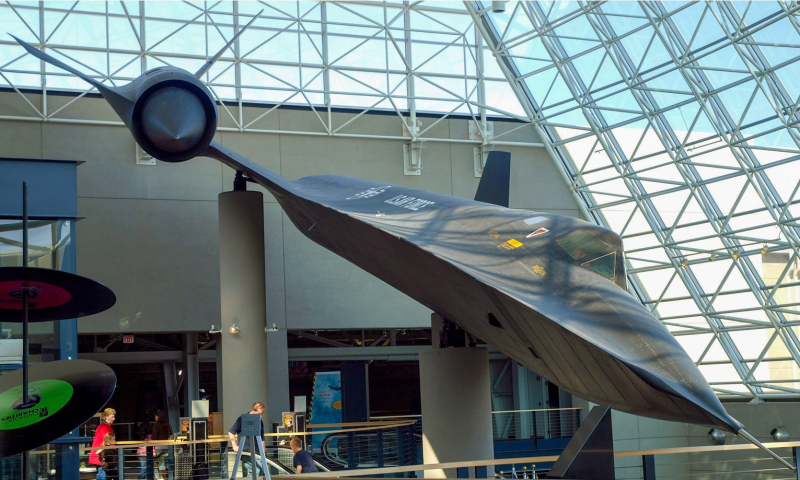Transcontinental
Today, we fly across America. The University of Houston presents this series about the machines that make our civilization run, and the people whose ingenuity created them.
______________________
Have you flown, non-stop, across the United States, from one coast to the other? You likely have – some of you many times over. It takes only four-and-a-half to six hours, depending on whether (thanks to the jet stream) we fly east or west. Hundreds of such flights go every day.
So: what a Holy Grail transcontinental flight must’ve been when flight was in its infancy! Long before the Wright Brothers, one Rufus Porter (founder of Scientific American Magazine) tried to build a huge dirigible. He meant to take people to the California Gold fields. Of course, he failed. It’d be 1911 before an airplane, not a dirigible, first crossed America.
That year, William Randolph Hearst offered a fifty-thousand-dollar reward for the first to do it in thirty days. One Cal Rogers made the flight. Of course, Hearst said nothing about its being nonstop. Rogers’ airplane, sponsored by Vin Fiz Grape Soda, made seventy separate stops. It took fifty-four days!
Others, of course, improved on that. But not until 1923, four years before Lindbergh flew the Atlantic, did anyone do it in a single flight. And then, the US Army Air Service succeeded.
Lieutenants John Macready and Oakley Kelly made the twenty-five-hundred-mile flight in just under twenty-seven hours. And their airplane might be a surprise. You’ve likely heard of Fokker warplanes in World War One. They were the best German fighters to plague the Allies.

Replica of the Vin Fiz at the Old Rhinebeck Aerodrome (Photo by JHL)
But their maker, Anthony Fokker and his designer, Reinhold Platz, were owner and chief developer of that Dutch Fokker Company. Four years after the Armistice, we find them building peacetime airplanes in the Netherlands. Platz designed a huge monoplane for our Army – the Fokker T-2. The Army bought two of them. One finally succeeded after they’d made several failed attempts. It took twenty-seven hours.

Fokker T-2, courtesy of the National Air and Space Museum
But what about passenger flights? At first, passengers could make hybrid trips, mixing rail and airplane service. Then came airplane flights with multiple stops. But it was 1953 before you could make an eight-or-nine-hour non-stop flight from New York to Los Angeles. I made my first transcontinental flight two years later -- Newark to Seattle. Fourteen hours with stops.
So, one might wonder what the fastest such trip was. I give you our Cold War supersonic reconnaissance airplane, the Blackbird SR-71. It made the Mach 3.3 flight in sixty-eight minutes. Much faster than the Concorde.

Blackbird SR-71 high altitude supersonic reconnaissance airplane at the Strategic Air Command Museum. (Photo by JHL)
That was back in 1990. And hardly grist for passenger service. So: We can only wonder if you’ll ever enjoy crossing America at supersonic speeds, in your lifetimes. I certainly will not in mine.
I’m John Lienhard, at the University of Houston, where we’re interested in the way inventive minds work.
(Theme music)
Some Sources:
(Note that I have rounded off some numbers in my text. They will be given to more decimal places in these sources.)
Rufus Porter’s dirigible: An American Dirigible | The Engines of Our Ingenuity
Cal Rogers’ Vin Fiz airplane: Wright Model EX - Wikipedia
Cal Rogers and Vin Fiz | The Engines of Our Ingenuity
First Transcontinental Nonstop Flight > National Museum of the United States Air Force™ > Display
This Episode first aired on October 24, 2025.